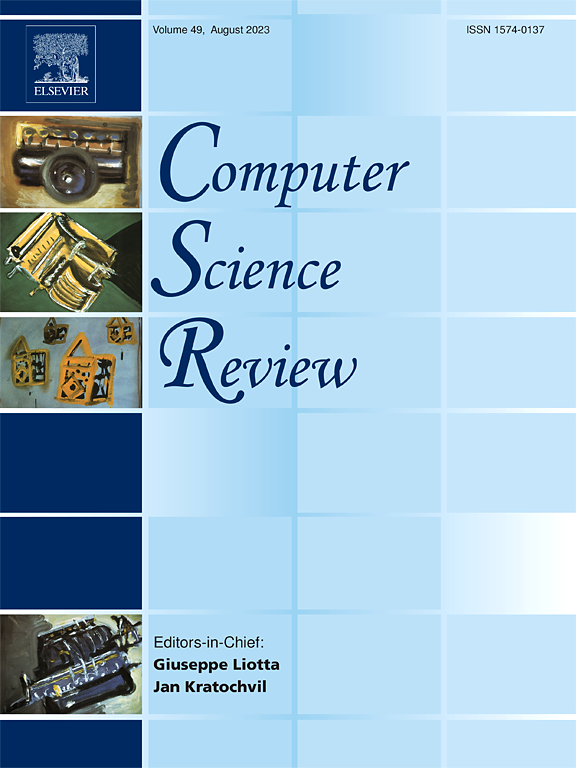使用上下文感知路由推进物联网驱动的wsn:全面综述
IF 12.7
1区 计算机科学
Q1 COMPUTER SCIENCE, INFORMATION SYSTEMS
引用次数: 0
摘要
随着动态和异构物联网驱动的无线传感器网络(wsn)日益复杂,上下文感知路由已成为优化网络性能的一种有前途的方法。这些协议通过利用上下文数据提高了服务质量(QoS)、延长了网络寿命并提高了能源效率。然而,与传统的路由方案相比,它们仍未得到充分开发。本调查首次对该领域进行了全面回顾,通过检查其发展、方法和过去二十年的表现,解决了关键的研究差距。介绍了一种新的分类框架,根据操作环境和网络特征对协议进行分类,提供了一个结构化的设计视图。此外,评估了不同的上下文感知策略,突出了它们的优点和局限性。它还概述了开放的挑战,新兴的应用领域和未来的研究机会。主要发现表明,上下文感知的主动方法是当前大多数静态和动态环境研究的主要焦点,通常使用包括数据包传输、延迟和能源使用在内的指标进行评估。相比之下,反应性和混合方法受到的关注较少,特别是在分组传输、延迟和吞吐量方面。与传统的低能量自适应聚类层次(LEACH)模型相比,上下文感知聚类层次(CACH)模型可降低58.8%的能耗。CACH保留50%的节点能量,而LEACH消耗70%。同样,上下文感知RPL路由(Context-Aware RPL Routing, CA-RPL)适应节点移动性,功耗降低50%,低移动性下的数据包传输率可达85%-90%,高速和密度下的数据包传输率可达80%以上,提高了网络寿命和QoS。通过提供关键的见解和比较评估,本研究为研究人员和从业人员提供了宝贵的资源,指导该领域未来的创新。本文章由计算机程序翻译,如有差异,请以英文原文为准。
Advancing IoT-driven WSNs with context-aware routing: A comprehensive review
With the increasing complexity of dynamic and heterogeneous IoT-driven Wireless Sensor Networks (WSNs), context-aware routing has emerged as a promising approach to optimize network performance. These protocols improve Quality of Service (QoS), increase network lifespan, and improve energy efficiency by utilizing contextual data. However, they remain underexplored compared to traditional routing schemes. This survey presents the first comprehensive review in this area, addressing key research gaps by examining their evolution, methodologies, and performance over the past two decades. A novel classification framework is introduced, categorizing the protocols based on operational context and network characteristics, providing a structured view of their design. Moreover, diverse context-aware strategies are assessed, highlighting their benefits and limitations. It also outlines open challenges, emerging application areas, and future research opportunities. Key findings reveal that the context-aware proactive methods are the main focus of the majority of current research on both static and dynamic environments, and are commonly assessed using metrics including packet delivery, delay, and energy usage. In contrast, reactive and hybrid methods have received less attention, especially in terms of packet delivery, delay, and throughput. The Context-Aware Clustering Hierarchy (CACH) is found to reduce the energy consumption by 58.8% compared to the conventional Low-Energy Adaptive Clustering Hierarchy (LEACH) based models. CACH retains energy in 50% of nodes, while LEACH depletes 70%. Similarly, the Context-Aware RPL Routing (CA-RPL) adapts to node mobility with 50% less power consumption, achieving a packet delivery ratio of 85%–90% under low mobility and over 80% under high speed and density, enhancing both network lifespan and QoS. By providing critical insights and comparative evaluations, this study serves as a valuable resource for researchers and practitioners, guiding future innovations in this field.
求助全文
通过发布文献求助,成功后即可免费获取论文全文。
去求助
来源期刊

Computer Science Review
Computer Science-General Computer Science
CiteScore
32.70
自引率
0.00%
发文量
26
审稿时长
51 days
期刊介绍:
Computer Science Review, a publication dedicated to research surveys and expository overviews of open problems in computer science, targets a broad audience within the field seeking comprehensive insights into the latest developments. The journal welcomes articles from various fields as long as their content impacts the advancement of computer science. In particular, articles that review the application of well-known Computer Science methods to other areas are in scope only if these articles advance the fundamental understanding of those methods.
 求助内容:
求助内容: 应助结果提醒方式:
应助结果提醒方式:


